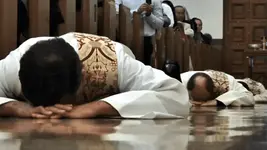deducer
Bronze Member
deducer, my opinion is that we don't know the truth about the '82 pounds recovery', and never will. There are several versions floating around. This ought to tell you something - maybe everyone has been misinformed. I'm done talking about it.
There are only two versions "floating" around, and one of them is Bob's.
If anyone is misinformed, it is Bob/his party.
The big hole in Bob's wealthy rancher/Mexican revolution theory is the Gadsden purchase of 1854, which ceded the entire Arizona territory to the United States, including the land of today's Nogales, AZ.
The Mexican revolution occurred from 1910 to around 1920.
But just because the territory was US property long before the revolution, this doesn't necessarily rule out the possibility that the Mexican revolution reached up to and across the border since it was not as well monitored as it is today, hence my researching this topic a little more.
As it turns out, the establishment of Fort Buchanan in Sonoita, Arizona, in 1856, which I believe is just 30 miles from Nogales, effectively rules this theory out.
The other possibility is that there may have been a wealthy Mexican rancher, but instead of fleeing the revolution, he may have been in fact, fleeing the Americans.
Further research into Fort Buchanan also ruled this out.
Prior to the establishment of Fort Buchanan, a large part of this area was subject to frequent Apache raids, and miners and ranchers did not settle
in this area until after the fort was established (Sacks, 1965, 207).
Therefore we can rule out the theory that a wealthy Mexican rancher buried those caches.
Again, I am not questioning Bob's integrity or honesty; I am sure he is an outstanding individual, but his theory just doesn't pass the test.
Last edited:



 You are of course stating your opinions, not fact. I doubt very highly that the editors of Western and Eastern Treasures, Lost Treasure and others, would have appreciated your views, much less agreed with them.
You are of course stating your opinions, not fact. I doubt very highly that the editors of Western and Eastern Treasures, Lost Treasure and others, would have appreciated your views, much less agreed with them.


